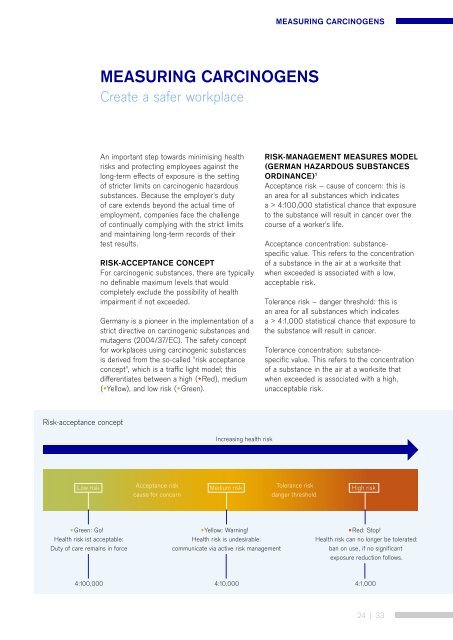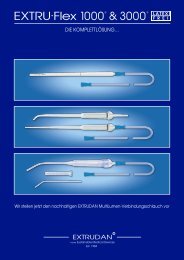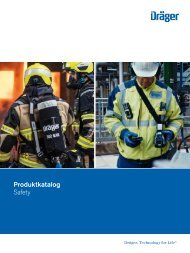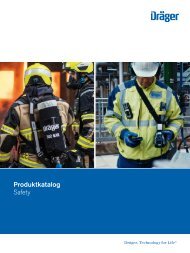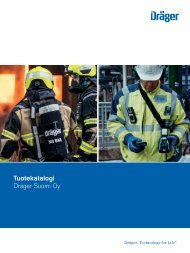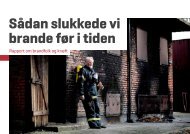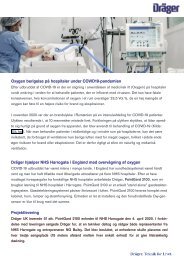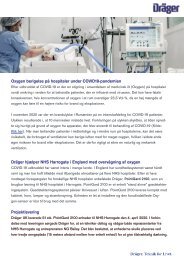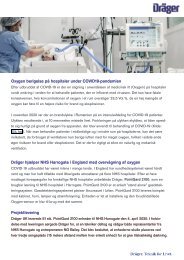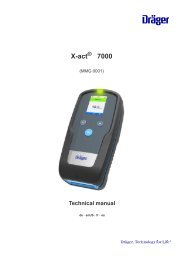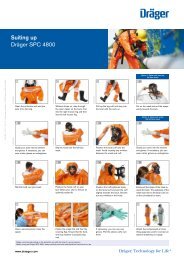Carcinogenic Substances at Work
You also want an ePaper? Increase the reach of your titles
YUMPU automatically turns print PDFs into web optimized ePapers that Google loves.
MEASURING CARCINOGENS<br />
MEASURING CARCINOGENS<br />
Cre<strong>at</strong>e a safer workplace<br />
An important step towards minimising health<br />
risks and protecting employees against the<br />
long-term effects of exposure is the setting<br />
of stricter limits on carcinogenic hazardous<br />
substances. Because the employer's duty<br />
of care extends beyond the actual time of<br />
employment, companies face the challenge<br />
of continually complying with the strict limits<br />
and maintaining long-term records of their<br />
test results.<br />
RISK-ACCEPTANCE CONCEPT<br />
For carcinogenic substances, there are typically<br />
no definable maximum levels th<strong>at</strong> would<br />
completely exclude the possibility of health<br />
impairment if not exceeded.<br />
Germany is a pioneer in the implement<strong>at</strong>ion of a<br />
strict directive on carcinogenic substances and<br />
mutagens (2004/37/EC). The safety concept<br />
for workplaces using carcinogenic substances<br />
is derived from the so-called "risk acceptance<br />
concept", which is a traffic light model; this<br />
differenti<strong>at</strong>es between a high (•Red), medium<br />
(•Yellow), and low risk (•Green).<br />
RISK-MANAGEMENT MEASURES MODEL<br />
(GERMAN HAZARDOUS SUBSTANCES<br />
ORDINANCE) 1<br />
Acceptance risk – cause of concern: this is<br />
an area for all substances which indic<strong>at</strong>es<br />
a > 4:100,000 st<strong>at</strong>istical chance th<strong>at</strong> exposure<br />
to the substance will result in cancer over the<br />
course of a worker's life.<br />
Acceptance concentr<strong>at</strong>ion: substancespecific<br />
value. This refers to the concentr<strong>at</strong>ion<br />
of a substance in the air <strong>at</strong> a worksite th<strong>at</strong><br />
when exceeded is associ<strong>at</strong>ed with a low,<br />
acceptable risk.<br />
Tolerance risk – danger threshold: this is<br />
an area for all substances which indic<strong>at</strong>es<br />
a > 4:1,000 st<strong>at</strong>istical chance th<strong>at</strong> exposure to<br />
the substance will result in cancer.<br />
Tolerance concentr<strong>at</strong>ion: substancespecific<br />
value. This refers to the concentr<strong>at</strong>ion<br />
of a substance in the air <strong>at</strong> a worksite th<strong>at</strong><br />
when exceeded is associ<strong>at</strong>ed with a high,<br />
unacceptable risk.<br />
Risk-acceptance concept<br />
Increasing health risk<br />
Low risk<br />
Acceptance risk<br />
cause for concern<br />
Medium risk<br />
Tolerance risk<br />
danger threshold<br />
High risk<br />
• Green: Go!<br />
Health risk ist acceptable:<br />
Duty of care remains in force<br />
• Yellow: Warning!<br />
Health risk is undesirable:<br />
communic<strong>at</strong>e via active risk management<br />
• Red: Stop!<br />
Health risk can no longer be toler<strong>at</strong>ed:<br />
ban on use, if no significant<br />
exposure reduction follows.<br />
4:100,000<br />
4:10,000 4:1,000<br />
24 | 33


